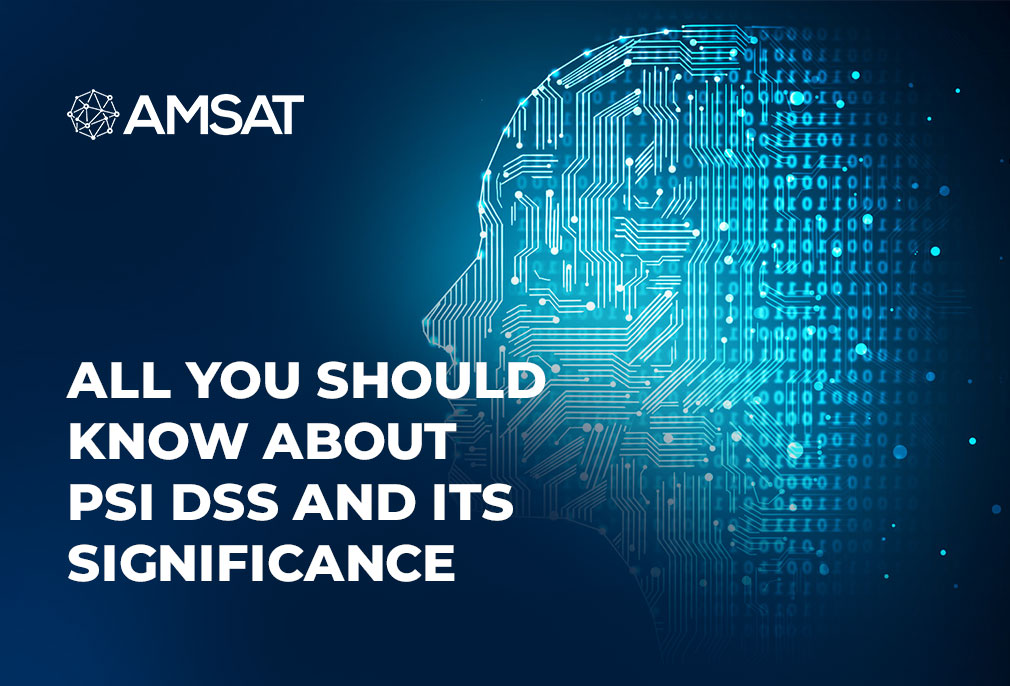Latest Blogs

By AMSAT Feb 10,2021
All you Should Know about PSI DSS and Its Significance
What is PCI DSS?
Constituted by a few renowned financial services including Visa, MasterCard, in 2004, Payment Card Industry Data Security Standard (PCI DSS) is a set of safety standards aimed at protecting credit and debit card transactions against data holdup and scam. The PCI SSC is not legally authorized to force compliance, but it is mandatory for any business that processes credit or debit card transactions. It’s also considered as the most effective method to protect sensitive data and information, thus helping companies create enduring and reliable relationships with their clients.
PCI-compliant security offers an important asset that apprises clients that it’s safe to transact with your business. On the contrary, the cost of nonconformity, both in financial and reputational terms, should be sufficient to persuade any entrepreneur not to underestimate data security. A data break that discloses important customer information is expected to have severe consequences on a company. A breach may lead to fines from payment card issuers, lawsuits, reduced sales and a harshly dented reputation.
After undergoing a breach, a company may have to stop accepting credit card dealings or be compelled to pay higher ensuing charges than the original cost of security conformity. The investment in PCI security events ensures that other facets of your commerce are safe from nefarious hackers or cybercriminals.
PCI DSS Compliance levels
Level 1: This level has to do with traders processing upwards of 6 million credit or debit card transactions yearly. Carried out by an approved PCI auditor, the transactions must undergo an internal audit once a year. Also, they must submit to a PCI image by an Approved Scanning Vendor (ASV).
Level 2: This level deals with traders processing between one and 6 million real-world credit or debit card transactions per year. They need to complete an assessment once a year using a Self-Assessment Questionnaire (SAQ). Additionally, a quarterly PCI scan may be required.
Level 3: Applies to merchants processing between 20,000 and one million e-commerce transactions annually. They must complete an annual valuation using the pertinent SAQ, while a quarterly PCI scan may also be needed.
Level 4: This has to do with traders processing fewer than 20,000 e-commerce dealings or year, or those that process as much as one million real-world dealings. An annual evaluation using the pertinent SAQ must be finished and a three-monthly PCI scan may be obligatory.
PCI DSS requirements
Protect network
- A firewall configuration must be installed and maintained
- System passwords must be unique (not vendor-supplied)
Protect cardholder data
- Deposited cardholder data must be secured
- Transmissions of cardholder data across public networks must be encoded
Vulnerability management
- Anti-virus software must be employed and frequently updated
- Safe systems and applications must be designed and maintained
Access control
- Cardholder data access must be limited to a business need-to-know basis
- Every individual with computer access must be allocated a unique ID
- Physical access to cardholder data must be limited
Network monitoring and testing
- Admittance to cardholder data and network resources must be followed and checked
- Security systems and procedures must be regularly tested
Information security
- A policy regarding information security must be maintained
Significance of PCI DSS
Conclusion
TAGS
- Vulnerability management
- Security Updates
- PSI DSS
Recent Blogs
Ready to Get Started?
Our specialists are ready to tailor our security service solutions to fit the needs of your organization.









